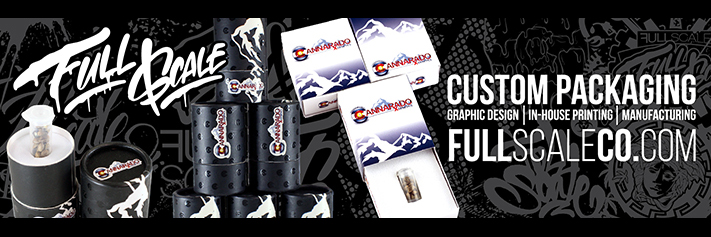M
mojo
Guest
I posted this because I had back to back PM's asking me how it's done.
Setting Up a Top Feed Recirculating System
Required Items:
Reservoir
Tray
Main pump of adequate size, depending on how many sites you’ll be watering
150gph auxiliary pump for mixing nutrients (optional, but really nice to have)
150gph circulating pump to keep water moving in reservoir so return won’t go straight to the main pump
½” poly hose
½” nylon elbow
Figure 8 hose end to close off the bitter end of the ½” tubing
¼” tubing – I use the 100’ box from Lowe’s – tubing’s got MISTER LANDSCAPE on it.
¼” tees
Tool for making ¼” holes in the ½” tubing for your tees to push into.
¼” stakes for tubing in pots
Drain for the tray
6” – 8” drainpipe extension
Piece of nylon panty hose (to act as a filter on tray drain)
1. With a hole saw, cut a hole at the proper place in the tray for the drain to fit into and install it. Normally, I choose the end of the tray that has a depressed well in it to install the drain. You can find a little drain for bar sinks at Home Depot or Lowe’s. If you use one of the commercial trays, you'll need to use a pair of vice-grips and bend one side of the flange on the drain up a little to get it to fit into that little well on the end - even though it's a small bar drain, the diameter of the flange on the drain's still just about 1/4" too big to fit flush unless you curl one edge of it up.
2. Fix the drainpipe in place and rubber band the toe out of a pair of nylons over the end of the drainpipe to act as a filter to catch the small coco particles as the water returns from the pots. This will hang down into the water and is a nice place for beneficial bacteria to hang out in, if you’re into that sort of thing.
3. Using the hole saw again, drill a hole in the top of the reservoir for the drainpipe to fit through. I’ve placed mine several inches above the inspection plate hole in the reservoir. Placing it there allows me to remove the inspection cover when I add to or adjust what’s in the reservoir.
4. Using a 5/8” drill bit, drill a hole in the lip of the tray above the drain for the ½” elbow to fit into and push the elbow into this hole. This will be where the hose makes the turn from coming out of your reservoir going into the bed of the tray.
5. Place the main pump onto the tray.
6. Cut a length of the ½” hose long enough to go from the main pump to that elbow and fix one end to the pump and the other to the elbow.
7. Cut another piece of ½” tubing adequate to run the length of the bottom of your tray.
8. Using the hole making tool for the ¼” tubing, make holes in the ½” main line for the ¼” tees. For a 10 site, make 5 holes, etc. Push the tees into these holes. Do NOT use drippers – they clog! Run the ends of the ¼” hoses wide open.
9. Cut the ¼” tubing into equal lengths, depending on how long you need them. Push these pieces of tubing onto the tees.
10. Install the figure 8 hose end on one end of the hose and push the other onto the ½” tee at the drain end of the tray. Lay the hose in the bottom of the tray.
11. Using a drill bit, drill notches into the corners of the inspection hole in the reservoir for the cords coming off your pumps.
I use 3 pumps in each reservoir – but that’s just me, lol. The main pump, of course, and two smaller 150gph pumps. One of the 150’s comes on with the main pump and provides circulation that keeps the return coming out of the drain from immediately being sucked back into the main pump which is located only about 12” from the drain. The 2nd 150 gph is plugged into a power strip laying on the reservoir, by the inspection hole cover. I flip this one on when I’m adding nutrients before the main pump comes on. It mixes the nutrients quickly so my meter picks up the change fast. Both of these smaller pumps have suction cups on them and I’ve located them side by side in the right hand corner of my reservoir, just inside the inspection cover. This allows them to create a swirling motion in the reservoir that keeps things moving nicely.
Pump size? Whatever it takes – I use a 350gph pond pump from Lowe’s or Home Depot for my 10 site trays. It will do more but gets kinda iffy when you get over 16. The initial surge from a much larger pump on a 10 site will blast coco out of the pots. Even using the smaller pump, running the lines wide open will dig little holes in the coco where the water lands in the pots. These little holes will only get an inch or so deep, but if this bothers you, push a 1½” square Grodan rockwool cube onto the end of the hose and no more holes in the coco - :D.
At the initial waterings, you’re going to get lots of coco particles coming back in your return. Don’t worry about this because the panty hose filter you hung on the drainpipe’s going to catch it. I go a year or so before I have to change out the panty hose filters. They get kinda full and float in the reservoir – so don’t get worried – panty hose material stretches.
I used to also put a bag filter on my pump but found this to be unnecessary as the large main pump will pump small stuff through it without a problem so far. When I removed the bag filter, I found my volume increased significantly.
Home Depot has spools of the ¼” tubing but it’s too stiff, in my opinion. The MISTER LANDSCAPE tubing I use comes in a box and has a part number of MLT-B100B on it. It’s more flexible and easier to work with.
Like I said, this is the basic way to set up a recirc system but you can get fancier if and when you want to by adding a manifold to replace the ½” main line. This requires more stuff but will do a lot to equalize the volume coming out of each of the ¼” feeder lines. With the volume of water I put through each pot, equalizing the flow is not an issue for me. If the grower’s into micro managing their grow, the manifold may be of interest. I don’t believe in micro management – to much busy work, imo – so I just let er rip the way I’ve got it set up. :D
I hope this info helps the person setting up a recirculating, top-feed system. I think that’s about it - :D
Setting Up a Top Feed Recirculating System
Required Items:
Reservoir
Tray
Main pump of adequate size, depending on how many sites you’ll be watering
150gph auxiliary pump for mixing nutrients (optional, but really nice to have)
150gph circulating pump to keep water moving in reservoir so return won’t go straight to the main pump
½” poly hose
½” nylon elbow
Figure 8 hose end to close off the bitter end of the ½” tubing
¼” tubing – I use the 100’ box from Lowe’s – tubing’s got MISTER LANDSCAPE on it.
¼” tees
Tool for making ¼” holes in the ½” tubing for your tees to push into.
¼” stakes for tubing in pots
Drain for the tray
6” – 8” drainpipe extension
Piece of nylon panty hose (to act as a filter on tray drain)
1. With a hole saw, cut a hole at the proper place in the tray for the drain to fit into and install it. Normally, I choose the end of the tray that has a depressed well in it to install the drain. You can find a little drain for bar sinks at Home Depot or Lowe’s. If you use one of the commercial trays, you'll need to use a pair of vice-grips and bend one side of the flange on the drain up a little to get it to fit into that little well on the end - even though it's a small bar drain, the diameter of the flange on the drain's still just about 1/4" too big to fit flush unless you curl one edge of it up.
2. Fix the drainpipe in place and rubber band the toe out of a pair of nylons over the end of the drainpipe to act as a filter to catch the small coco particles as the water returns from the pots. This will hang down into the water and is a nice place for beneficial bacteria to hang out in, if you’re into that sort of thing.
3. Using the hole saw again, drill a hole in the top of the reservoir for the drainpipe to fit through. I’ve placed mine several inches above the inspection plate hole in the reservoir. Placing it there allows me to remove the inspection cover when I add to or adjust what’s in the reservoir.
4. Using a 5/8” drill bit, drill a hole in the lip of the tray above the drain for the ½” elbow to fit into and push the elbow into this hole. This will be where the hose makes the turn from coming out of your reservoir going into the bed of the tray.
5. Place the main pump onto the tray.
6. Cut a length of the ½” hose long enough to go from the main pump to that elbow and fix one end to the pump and the other to the elbow.
7. Cut another piece of ½” tubing adequate to run the length of the bottom of your tray.
8. Using the hole making tool for the ¼” tubing, make holes in the ½” main line for the ¼” tees. For a 10 site, make 5 holes, etc. Push the tees into these holes. Do NOT use drippers – they clog! Run the ends of the ¼” hoses wide open.
9. Cut the ¼” tubing into equal lengths, depending on how long you need them. Push these pieces of tubing onto the tees.
10. Install the figure 8 hose end on one end of the hose and push the other onto the ½” tee at the drain end of the tray. Lay the hose in the bottom of the tray.
11. Using a drill bit, drill notches into the corners of the inspection hole in the reservoir for the cords coming off your pumps.
I use 3 pumps in each reservoir – but that’s just me, lol. The main pump, of course, and two smaller 150gph pumps. One of the 150’s comes on with the main pump and provides circulation that keeps the return coming out of the drain from immediately being sucked back into the main pump which is located only about 12” from the drain. The 2nd 150 gph is plugged into a power strip laying on the reservoir, by the inspection hole cover. I flip this one on when I’m adding nutrients before the main pump comes on. It mixes the nutrients quickly so my meter picks up the change fast. Both of these smaller pumps have suction cups on them and I’ve located them side by side in the right hand corner of my reservoir, just inside the inspection cover. This allows them to create a swirling motion in the reservoir that keeps things moving nicely.
Pump size? Whatever it takes – I use a 350gph pond pump from Lowe’s or Home Depot for my 10 site trays. It will do more but gets kinda iffy when you get over 16. The initial surge from a much larger pump on a 10 site will blast coco out of the pots. Even using the smaller pump, running the lines wide open will dig little holes in the coco where the water lands in the pots. These little holes will only get an inch or so deep, but if this bothers you, push a 1½” square Grodan rockwool cube onto the end of the hose and no more holes in the coco - :D.
At the initial waterings, you’re going to get lots of coco particles coming back in your return. Don’t worry about this because the panty hose filter you hung on the drainpipe’s going to catch it. I go a year or so before I have to change out the panty hose filters. They get kinda full and float in the reservoir – so don’t get worried – panty hose material stretches.
I used to also put a bag filter on my pump but found this to be unnecessary as the large main pump will pump small stuff through it without a problem so far. When I removed the bag filter, I found my volume increased significantly.
Home Depot has spools of the ¼” tubing but it’s too stiff, in my opinion. The MISTER LANDSCAPE tubing I use comes in a box and has a part number of MLT-B100B on it. It’s more flexible and easier to work with.
Like I said, this is the basic way to set up a recirc system but you can get fancier if and when you want to by adding a manifold to replace the ½” main line. This requires more stuff but will do a lot to equalize the volume coming out of each of the ¼” feeder lines. With the volume of water I put through each pot, equalizing the flow is not an issue for me. If the grower’s into micro managing their grow, the manifold may be of interest. I don’t believe in micro management – to much busy work, imo – so I just let er rip the way I’ve got it set up. :D
I hope this info helps the person setting up a recirculating, top-feed system. I think that’s about it - :D
Last edited:

















